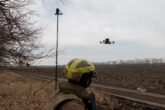December 14, 2021
Will Strong Actions Follow Words in Biden’s Space Policy?
The bipartisan nature of space policy has allowed collaboration across the federal government and a continuity between administrations that is rare in the national security world. The new Space Priorities Framework [PDF] released earlier this month by the Biden White House follows in that tradition, reaffirming space priorities that will allow the US government to catch up with the American commercial space sector and protect national interests in an increasingly contested domain.
From that standpoint, the framework scores full marks for continuity in strategic priorities and some improved messaging, but these priorities must be followed by actions and investments. So what do the Biden administration and Congress need to do to walk the space walk?
From setting a strong anti-satellite weapons test policy to engaging in space traffic management, the United States needs to make several key decisions and investments in the coming months to begin following through on these commitments.
The United States is the world leader in space. A robust space program enables us to expand our alliances and partnerships and underpins our military strength.
In the new framework, consensus priorities include investment in space domain awareness capabilities, which serve important peacetime functions of preventing and resolving non-hostile threats (through space traffic management, or coordination) and deterring hostile acts (through demonstrated capabilities in detection and attribution). In wartime, space domain awareness capabilities help the United States respond to hostile acts when deterrence fails.
Two additional related lines of effort are the pursuit of improved acquisition processes for essential space technologies, investment in more resilient systems and architectures, and increased cooperation with other civil, commercial, or military space actors.
Read the full article from Breaking Defense.
More from CNAS
-
Defense / Transatlantic Security
When Defense Becomes Destruction: Austria-Hungary’s Mistake and Ukraine’s RiskThis article was originally posted on War on the Rocks. The southeastern Polish city of Przemyśl, with its elegant 19th century Habsburg-era train station, remains one of the ...
By Franz-Stefan Gady
-
Defense / Transatlantic Security
Ukraine’s Catch-22 MomentThis article was originally published in the Financial Times. In Joseph Heller’s wartime classic, Catch-22, the protagonist Yossarian seeks out the US army surgeon Doc Daneeka...
By Franz-Stefan Gady
-
CNAS Insights | Budgetary Own Goals Undermine “Speed and Volume”
On November 7, Secretary of Defense Pete Hegseth laid out a plan to overhaul the Department of Defense’s (DOD’s) acquisition system. Placing an emphasis on delivering new capa...
By Philip Sheers, Carlton Haelig & Stacie Pettyjohn
-
Drones: Who Is Making the New Weapons of War?
From Ukraine and Russia to Gaza and Sudan, drones have become a key weapon of war. Which companies are making them, and profiting from this rapidly expanding but controversial...
By Stacie Pettyjohn




